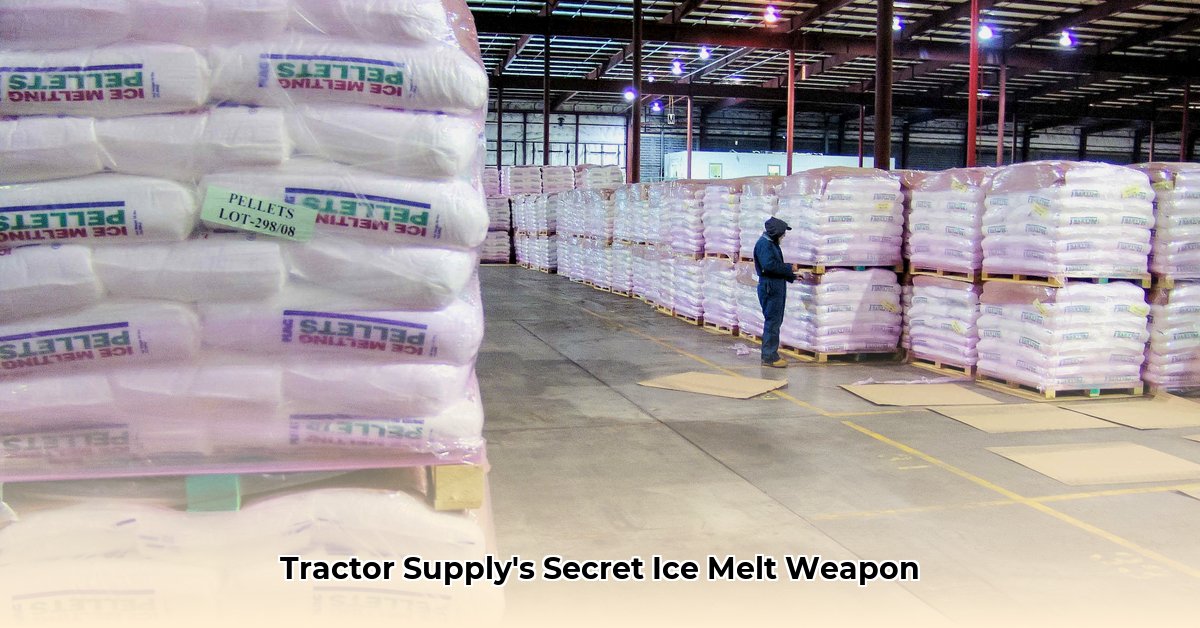
Winter's icy grip can turn your driveway into a skating rink. Don't let it! This guide helps you choose the right ice melt from Tractor Supply to keep your property safe and clear. We'll compare different ice melt types, detailing their pros, cons, application, cost, and user reviews. For more on fertilizer options, check out Tractor Supply's fertilizer selection. Let's make your winter walks worry-free!
Choosing the Right Ice Melter: A Tractor Supply Comparison
Tractor Supply offers various ice melt products, each with unique strengths and weaknesses. Your best choice depends on your budget, area size, environmental concerns, and pet safety.
Rock Salt (Sodium Chloride): The Budget-Friendly Option
Product Description: Rock salt is the classic, inexpensive ice melter. It's effective but can be harsh on plants and pets.
Pros: Affordable, widely available, effective at melting ice.
Cons: Can damage plants and lawns, may harm pets if ingested, and can be corrosive to concrete with prolonged use. It's also not the fastest-acting option.
Application Instructions: Spread evenly (1/2 inch layer) over icy surfaces. Avoid piling. Reapply as needed.
Cost Analysis: Least expensive per pound, but higher usage may offset cost savings.
User Reviews: Many find it effective for large areas, but some report damage to landscaping and concerns about pet safety.
Calcium Chloride: Speed and Efficiency
Product Description: Calcium chloride melts ice rapidly, even in lower temperatures. It often comes in pellets or flakes for easier spreading.
Pros: Melts ice quickly, effective in cold temperatures, generally less damaging to concrete than rock salt.
Cons: More expensive than rock salt, can irritate skin and is harmful if ingested by pets. Environmental concerns exist regarding its impact on waterways. Repeated use can still damage concrete.
Application Instructions: Apply a thin layer according to package directions. Avoid over-application.
Cost Analysis: More expensive per pound than rock salt, but rapid action often requires less overall product.
User Reviews: Users praise its speed but express concerns regarding pet and environmental safety.
Magnesium Chloride: A Gentler Approach
Product Description: Often considered a more environmentally friendly alternative.
Pros: Less corrosive to concrete, gentler on vegetation and pets than rock salt or calcium chloride. Generally considered safer for the environment.
Cons: More expensive than rock salt, may not melt ice as quickly as calcium chloride.
Application Instructions: Follow package directions carefully; less is generally more effective.
Cost Analysis: Most expensive per pound, better suited for smaller areas or when environmental impact and pet safety are paramount.
User Reviews: Users appreciate its environmental friendliness and gentler effects on plants and animals. However, some find the slower melting speed less practical for large areas.
Choosing the Right Ice Melt for Your Needs
This table summarizes the best choices for different situations:
| Scenario | Best Choice | Reasons |
|---|---|---|
| Speed is Key | Calcium Chloride | Fastest melting, even in low temperatures. |
| Budget is Tight | Rock Salt | Lowest initial cost, suitable for large, less sensitive areas. |
| Pets & Plants First | Magnesium Chloride | Gentlest on vegetation and animals, safer for the environment. |
| Small Areas | Magnesium Chloride or Calcium Chloride (smaller bags) | Allows for precise application, minimizing usage and waste. |
Safety First: Handling, Storage, and Disposal
- Storage: Keep all ice melts dry, secure, out of reach of children and pets.
- Application: Wear gloves to protect your skin. Avoid direct contact.
- Disposal: Follow local regulations. Don't pour down drains or into waterways. Improper handling can pose hazards.
Frequently Asked Questions (FAQs)
Q: How much ice melt do I need? A: The amount depends on the area, ice thickness, and product type. Follow package instructions for application rates.
Q: Are there truly pet-safe ice melts? A: While some products are marketed as pet-safe, always read labels carefully and consider products with ingredients known to be less harmful to animals.
Q: What's the best way to clear ice from steps? A: Use a smaller amount of ice melt, focusing on the most treacherous spots. Don't over-apply.
Remember: Safe and effective ice removal requires choosing the right product and using it properly. Prioritize safety for yourself and your pets this winter!